Fiat’s most spacious 500L hits the showrooms
 Fiat’s 500L MPW is the latest variant of the firm’s family sized hatchback to be launched in the UK.
Fiat’s 500L MPW is the latest variant of the firm’s family sized hatchback to be launched in the UK.
It is the most capacious of the 500L range and comes with the option to have seven seats.
In five-seat guise, the MPW (Multi Purpose Wagon) has 638 litres of load-swallowing capacity in a car that is shorter than a C-segment estate such as a VW Golf, which has just 505 litres of boot space.
The seven-seat option’s rearmost seats fold away to give luggage space that is comparable to the five-seater car. It should be noted that they are only suitable for people under 5 feet 5″ tall, though.
The MPW will be available in two trim levels: Pop Star and Lounge.
 Opt for Pop Star specification and you’ll get air conditioning, 16″ alloys, a 5″ touchscreen infotainment system with Uconnect (for wireless phone connectivity), cruise control, six airbags, stability and traction control, plus rear parking sensors.
Opt for Pop Star specification and you’ll get air conditioning, 16″ alloys, a 5″ touchscreen infotainment system with Uconnect (for wireless phone connectivity), cruise control, six airbags, stability and traction control, plus rear parking sensors.
Lounge adds to that list with rear electric windows, front fog lights, dual-zone automatic climate control, auto headlights, rain-sensing wipers, tables on the front seat backs, storage nets, a glare-cutting electro-chromatic rear-view mirror, rear privacy glass, floor mats and an electric glass sunroof.
The MPW will launch with four engine options: the 95bhp 1.4-litre petrol (five-seat only), 105bhp 0.9-litre TwinAir petrol, 85bhp 1.3-litre MultiJet diesel (which can be specced with a Dualogic automatic transmission) and the 105bhp 1.6-litre MultiJet diesel.
 Nine different exterior paint choices are available. Add to those a variety of contrasting roof and mirror colour combinations, plus a range of alloys wheels, and there’s a wealth of customization options on tap.
Nine different exterior paint choices are available. Add to those a variety of contrasting roof and mirror colour combinations, plus a range of alloys wheels, and there’s a wealth of customization options on tap.
Prices start at £15,795 for the 5-seat, 1.4 Pop Star, while the cheapest seven-seater is the £17,990 Pop Star TwinAir. The range-topping Lounge 1.6 MultiJet will set you back £20,490.
Alfa’s Disco Volante goes into limited production
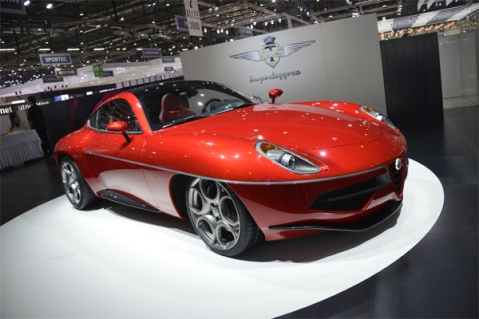 The fabulous 2013 Alfa Romeo Disco Volante will be built to celebrate the 60th anniversary of the original 1900 C52 Disco Volante.
The fabulous 2013 Alfa Romeo Disco Volante will be built to celebrate the 60th anniversary of the original 1900 C52 Disco Volante.
The lightweight and aerodynamic C52 was considered a style icon in 1952; the car even being registered with a design patent.
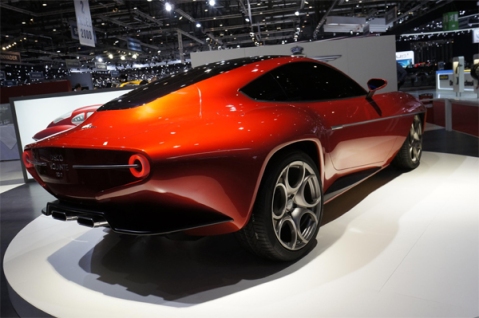 The latest model was styled by Touring Superleggera. The company used a mixture of carbonfibre and aluminium to hide the underpinnings of Alfa’s GT – the 8C Competizione.
The latest model was styled by Touring Superleggera. The company used a mixture of carbonfibre and aluminium to hide the underpinnings of Alfa’s GT – the 8C Competizione.
Carbonfibre is bonded to a steel central floor to create the passenger cell, while steel subframes front and rear support the engine, suspension and gearbox.
The Disco Volante uses the 8C’s 450bhp 4.7-litre V8, which has 354lb ft of torque, giving it a top speed of 181mph and a 0-62mph time of 4.2 seconds. It sends power through a sequential, paddle-shift gearbox and a limited-slip differential.
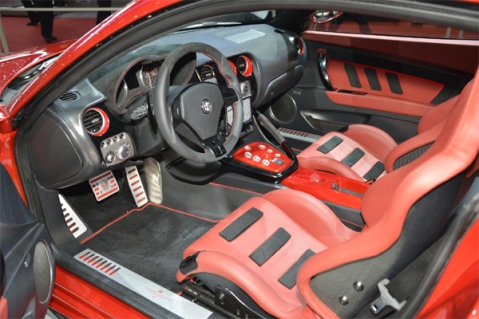 The chassis, and central carbon cell, is said to be extremely stiff, while the 8C’s transaxle transmission and mid-front engine configuration gives it a near-perfect weight balance of 49:51 front to rear.
The chassis, and central carbon cell, is said to be extremely stiff, while the 8C’s transaxle transmission and mid-front engine configuration gives it a near-perfect weight balance of 49:51 front to rear.
The new Alfa’s price has not been revealed, but it takes 4000 hours to build, has a limited production run and will likely cost far in excess of the 8C, which was priced at around £100k when new.
Four-wheeled fun for less than £1500
A limited budget need not mean a dull driving experience and, to prove it, we have selected five sub-£1500 cars that offer something above and beyond a standard-specification secondhand hatchback.
Renaultsport Clio 172 Cup
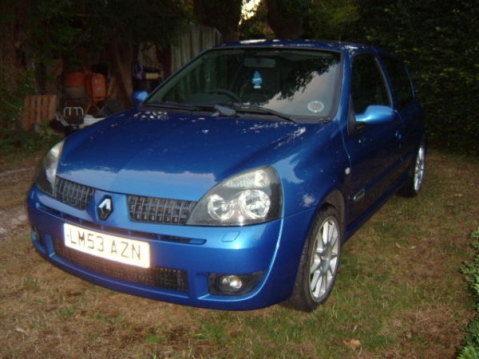 While a good 182 sadly alludes our budget, 172bhp is surely enough for a car as small as the Clio. Isn’t it? We have opted for a hardcore Cup that comes with fettled suspension, Speedline 16″ alloys, a front splitter and a rear spoiler. The mileage may be high, but money has been spent on this pocket rocket, which makes £1295 for a naturally aspirated hot hatch icon seem like a bargain. Just remember there’s no ABS!
While a good 182 sadly alludes our budget, 172bhp is surely enough for a car as small as the Clio. Isn’t it? We have opted for a hardcore Cup that comes with fettled suspension, Speedline 16″ alloys, a front splitter and a rear spoiler. The mileage may be high, but money has been spent on this pocket rocket, which makes £1295 for a naturally aspirated hot hatch icon seem like a bargain. Just remember there’s no ABS!
Toyota MR2 Roadster
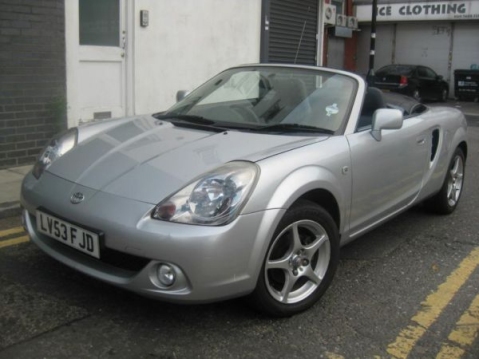 A lotus Elise on a budget sums up the Mr2 pretty well. It’s one of the cheapest ways to mid-engined, roof-down thrills and all UK cars were fitted with a limited-slip differential that feeds power to the rear wheels. It may not be super fast, with just 138bhp, but it weighs less than 1000kg and offers traction and balance that’s hard to match. This high-mileage car could be yours for £1350 and, as a 2003 facelifted example, avoids the ovalling cylinders that plagued earlier cars. The only negative we can think of is the lack of a proper boot.
A lotus Elise on a budget sums up the Mr2 pretty well. It’s one of the cheapest ways to mid-engined, roof-down thrills and all UK cars were fitted with a limited-slip differential that feeds power to the rear wheels. It may not be super fast, with just 138bhp, but it weighs less than 1000kg and offers traction and balance that’s hard to match. This high-mileage car could be yours for £1350 and, as a 2003 facelifted example, avoids the ovalling cylinders that plagued earlier cars. The only negative we can think of is the lack of a proper boot.
MGB GT
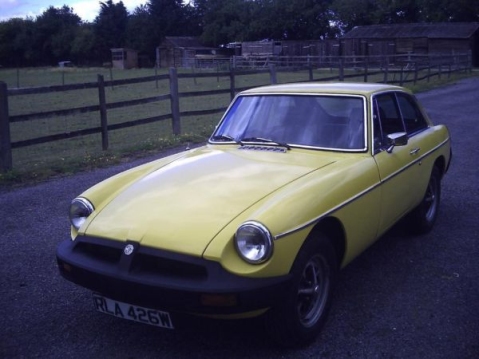 If you have ever fancied trying a classic for size, the MGB GT is a great place to start. Cheap to buy and simple to fix, there is also a world of parts available for the British legend. A mere £895 buys an MoT’d car that would benefit from some work, so there’s the opportunity to add value and bask in the satisfaction of fixing it yourself. Cheap classic-car insurance is not to be sniffed at either. Bear in mind, however, that the MG’s older mechanicals will require more regular maintenance than on a modern machine.
If you have ever fancied trying a classic for size, the MGB GT is a great place to start. Cheap to buy and simple to fix, there is also a world of parts available for the British legend. A mere £895 buys an MoT’d car that would benefit from some work, so there’s the opportunity to add value and bask in the satisfaction of fixing it yourself. Cheap classic-car insurance is not to be sniffed at either. Bear in mind, however, that the MG’s older mechanicals will require more regular maintenance than on a modern machine.
Jaguar XJ6 Sport
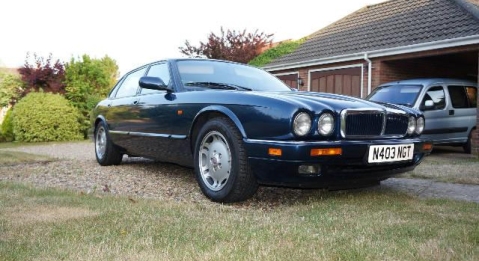 Don’t think having a family should stop you driving something interesting such as an XJ6 Sport. Although expensive to run, this £1350 XJ6 will provide a sportier drive than a same-vintage Mercedes S Class and combines it with Jaguar’s trademark creamy ride. As a ’95 car, this one’s got a straight-six that should prove more durable than the V8 (in the XJ8) that replaced it. Undoubtedly a large car, the Jaguar was noted in period for its relatively small boot and limited rear legroom, so make sure there’s space enough for your needs before purchase.
Don’t think having a family should stop you driving something interesting such as an XJ6 Sport. Although expensive to run, this £1350 XJ6 will provide a sportier drive than a same-vintage Mercedes S Class and combines it with Jaguar’s trademark creamy ride. As a ’95 car, this one’s got a straight-six that should prove more durable than the V8 (in the XJ8) that replaced it. Undoubtedly a large car, the Jaguar was noted in period for its relatively small boot and limited rear legroom, so make sure there’s space enough for your needs before purchase.
Land-Rover Discovery V8
 Who said fun had to be reserved for the roads? With the aerodynamics of a shed, huge weight and a 3.9-litre engine, few cars have the potential to financially ruin you like a petrol-engined Discovery. But, if you can afford to run it, little can match the Land-Rover off-road or sound as good on it. This £1290 V8‘s got a gas conversion, which will help rein in the costs, and your money should get a car that is in better nick than a diesel equivalent of the same value.
Who said fun had to be reserved for the roads? With the aerodynamics of a shed, huge weight and a 3.9-litre engine, few cars have the potential to financially ruin you like a petrol-engined Discovery. But, if you can afford to run it, little can match the Land-Rover off-road or sound as good on it. This £1290 V8‘s got a gas conversion, which will help rein in the costs, and your money should get a car that is in better nick than a diesel equivalent of the same value.
Ferrari F40 or F50, you decide
It’s a problem we would all love to have – which to choose from Ferrari’s legendary F40 and its replacement, the F50? The F40 may be lighter and offer much more torque, but the F50 took its V12 engine block, and much inspiration, from the world of F1. Chris Harris does his best to pick his favourite.
Price drop announced for Vauxhall’s Ampera
The entry price of Vauxhall’s range-extending hybrid – the Ampera – has been reduced by £3500 to £28,750 OTR.
That includes the Government’s Plug-In Car Grant of £5000 and puts the Ampera in close proximity to Nissan’s pure-electric Leaf. It can be bought outright for £25,500, but can’t hope to compete with the Vauxhall’s range of around 325 miles.
Duncan Aldred, Vauxhall’s chairman and MD, said: “Ampera’s new price position brings the cost of electric motoring much nearer to that of a conventional vehicle.”
When Porsche met turbo
By bolting a turbo to its everyday sports car, the 911, Porsche started a performance revolution that continues to this day. We take a look at the development of the Turbo from 1974 to the present day.
In 1969, Porsche was working on extracting more power from its race engines. Stuttgart even built a 770bhp flat-16, 6.0-litre, naturally aspirated Can-Am engine, but it was rendered almost instantly obsolete by a turbocharged version of the 917 Spyder’s 5.0-litre flat-12 that produced a bewildering 900bhp.
The writing was on the wall for a road-going turbocharged Porsche and, in 1974, it would come in the form of a blown 911 with a 3.0-litre flat six, giving 260bhp. The legend was born!
 The Porsche’s engine capacity would be increased in 1978 to 3.3-litres, but styling changes would remain minimal. That same year the model was fitted with an intercooler, an upgraded drivetrain, wider tyres and new brakes, which were developed from the 917 sports car. The 930 would be fitted with a five-speed gearbox in 1989, with production drawing to a close later that year.
The Porsche’s engine capacity would be increased in 1978 to 3.3-litres, but styling changes would remain minimal. That same year the model was fitted with an intercooler, an upgraded drivetrain, wider tyres and new brakes, which were developed from the 917 sports car. The 930 would be fitted with a five-speed gearbox in 1989, with production drawing to a close later that year.
 The next 911 to receive the Turbo treatment was the 964 in 1991. Power swelled to 360bhp, but much of the work went into making the car more usable day-to-day with better ventilation and power steering. It would also be the last Turbo to be rear-wheel drive.
The next 911 to receive the Turbo treatment was the 964 in 1991. Power swelled to 360bhp, but much of the work went into making the car more usable day-to-day with better ventilation and power steering. It would also be the last Turbo to be rear-wheel drive.
 By 1995, the 993 Turbo had been launched and boasted the added stability of four-wheel drive. Its 3.6-litre engine featured twin turbos, which gave a smoother power delivery and an impressive 408bhp.
By 1995, the 993 Turbo had been launched and boasted the added stability of four-wheel drive. Its 3.6-litre engine featured twin turbos, which gave a smoother power delivery and an impressive 408bhp.
 While the 996 (of 1997) signalled the end of the air-cooled flat-six, it also heralded the arrival of the Mezger engine, which was developed by Hans Mezger – the man behind much of Porsche’s motorsport success from 1960-’80s. It was the same engine as used in the company’s GT3 racer and is regarded as one of Porsche’s finest units. Fitting two turbos, brought power up to 420bhp.
While the 996 (of 1997) signalled the end of the air-cooled flat-six, it also heralded the arrival of the Mezger engine, which was developed by Hans Mezger – the man behind much of Porsche’s motorsport success from 1960-’80s. It was the same engine as used in the company’s GT3 racer and is regarded as one of Porsche’s finest units. Fitting two turbos, brought power up to 420bhp.
 In 2006, the blown 997 was launched. It delivered 480bhp using the same Mezger engine. That would change in 2010, though, when the second generation 997 brought with it an all-new, 500bhp, 3.8-litre flat-six, plus the company’s dual-clutch, PDK gearbox. The ultimate incarnation was the Turbo S, which had 530bhp.
In 2006, the blown 997 was launched. It delivered 480bhp using the same Mezger engine. That would change in 2010, though, when the second generation 997 brought with it an all-new, 500bhp, 3.8-litre flat-six, plus the company’s dual-clutch, PDK gearbox. The ultimate incarnation was the Turbo S, which had 530bhp.
 The latest 911 Turbo, the 991, was launched this year and features 560bhp, rear-wheel steering, an advanced four-wheel drive system and active aerodynamics.
The latest 911 Turbo, the 991, was launched this year and features 560bhp, rear-wheel steering, an advanced four-wheel drive system and active aerodynamics.
Audi A3 Convertible launched in Germany
Audi’s new A3 Convertible will go on sale in the UK from late October.
The car makes its world debut at the Frankfurt Motor Show and features a fully concealed soft-top roof that can be raised or lowered in 18 seconds at speeds of up to 31mph.
Three engines will be available from launch, two petrols – a 1.4-litre TFSI 140bhp unit with cylinder-on-demand technology and 1.8-litre TFSI serving up 180bhp – plus a diesel 2.0-litre TDI with 150bhp.
The smallest petrol engine can muster an impressive 56.5mpg, thanks to its ability to shut off two cylinders under low loads. The 1.8-litre unit, which initially will only be available with a seven-speed twin-clutch gearbox, can manage 48.7mpg, while the diesel tops the lot with a figure of 67.3mpg.
Other engines will follow including a 1.6-litre TDI and a 2.0-litre TFSI, plus Quattro and S3 variants. The latter will feature a 300bhp 2-litre petrol engine, can hit o-60mph in 5.4 seconds and is capable of 39.8mpg.
The new car is 50kg lighter than the out going model thanks to weight saving in the body, engines and interior.
Equipment will include a 5.8″ monitor for the Driver’s Information System, eco-driving guides, take-a-rest alerts and options such as a lighting package with touch-sensitive reading lights. Adaptive Cruise Control, Park Assist and Active Lane Assist will also be on offer.
Prices are to be confirmed.
Concepts headline for Ford in Frankfurt
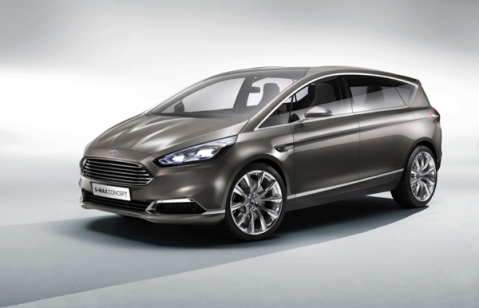 The S-MAX and Vignale concept cars will give showgoers a glimpse into the future of Ford at this year’s Frankfurt Motor Show.
The S-MAX and Vignale concept cars will give showgoers a glimpse into the future of Ford at this year’s Frankfurt Motor Show.
Ford’s MPV is set to incorporate the company’s Aston Martin aping grille and also feature new technology such as Pre-Collission Assist, which applies the brakes when it senses contact with a pedestrian is imminent. The S-MAX’s Dual-View Display, meanwhile, allows passengers to watch a film, while the driver can still see vital instruments.
The Vignale badge, showcased on the Mondeo-based concept, will become the top end specification for Ford, with a move upmarket thanks to soft interior leathers and subtle exterior revisions.
Vignale models will also include time-saving assistance such as collection and delivery for vehicle servicing, free lifetime car washes and invitations to exclusive events.
Gaetano Thorel, Ford’s European marketing vice president, said: “Ford Vignale premium services will meet the needs of the customer for whom time is the ultimate luxury – and they would be made to feel special from the moment they walk in the door.”
Skoda to showcase Rapid Spaceback in Frankfurt
 Skoda’s new Rapid Spaceback will make its world debut on 10 September at the Frankfurt Motor Show.
Skoda’s new Rapid Spaceback will make its world debut on 10 September at the Frankfurt Motor Show.
The firm claims the model provides class-leading space for rear-seat passengers.
The boot’s also capacious with 415 litres of luggage capacity, or 1380 litres with the backseats down. By way of comparison, a VW Golf has just 350 Litres and 1305 litres of space, respectively.
The Spaceback will also offer new trim and fresh upholstery materials. The firm’s range of Simply Clever features will include a dual-level boot floor, an ice scraper inside the fuel cap, plus a host of holders, nets and hooks.
The engine range will comprise of four petrol and two diesel units, while a GreenLine version will produce road-tax busting emissions of 99g/km.
Skoda will also launch its facelifted Yeti in Germany, which will come in two forms – the Yeti and the Yeti Outdoor.
The former will feature body coloured mouldings, while the latter’s black plastics will lend it a more rugged look. Both will feature a lightly revised interior, with new fabrics, and restyled alloys.
Renault reveals facelifted Megane
Renault has released pictures of its restyled Megane before its official presentation at the Frankfurt Motor Show on 10 September.
The Ford Focus rival will sport Renault’s latest front-end styling with a refreshed bumper and bonnet, plus new elliptical headlights that bring the car’s looks in line with the Clio.
The Hatchback, Sport Tourer and Coupé variants will, nonetheless, feature their own distinct identities says the company, while the Renaultsport and GT models will add a ‘more dynamic stance’ and gloss black headlight surrounds to the additions.
The new Megane is set to go on sale by April next year.



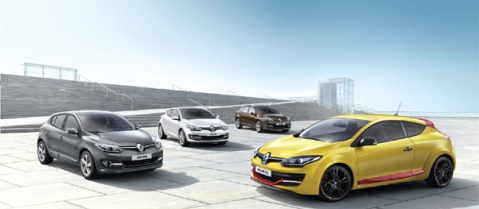
Recent Comments